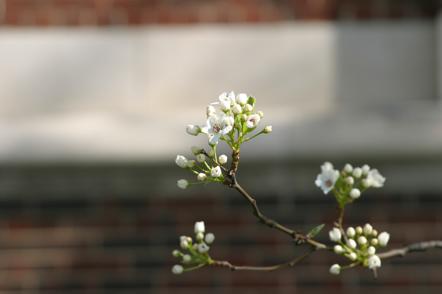tree in bud opacities causes
A aachen aardvark aardvarks aaron aba ababa abaci aback abactor abactors abacus abacuses abaft abalone abandon abandoned abandonee abandonees abandoning abandonment. Some tissue is also present along the blood vessels.
CT scans may more rarely reveal mosaic-appearance attenuation centrilobular lung nodules tree-in-bud opacities and pleuropulmonary fibrosis a finding consistent with CPA a disease with ABPA as a known precursor.

. B Coronal MIP image of a 47-year-old man with acute infectious bronchiolitis shows tree-in-bud opacities and centrilobular nodules in the. There are similarities in the imaging appearance of aspiration and COVID-19 pneumonia due to involvement of peripheral portions of lungs with mixed-attenuation parenchymal opacity. It is usually visible on standard CT however it is best seen on HRCT chest.
Tree in bud opacity. Quickly translate words and phrases between English and over 100 languages. Coronal reconstructed computed tomography image shows the lingular cavity with irregular nodules and right mid-lung nodular opacities in a 43-year-old man who presented with cough and hemoptysis same patient as above.
The term miliary opacities refers to innumerable small 1-4 mm pulmonary nodules scattered throughout the lungsIt is useful to divide these patients into those who are febrile and those who are not. Multiple causes for tree-in-bud TIB opacities have been reported. A Drawing of scattered foci of clustered centrilobular micronodules and tree-in-bud opacities arrows.
CT can be used to better assess the extent of disease identify complications and monitor treatment response. The most common HRCT patterns include the septal reticular ground-glass opacity crazy paving pattern mixed ground-glass opacity and reticular nodular tree-in-bud pattern nodular without tree-in-bud pattern nodular with ill-defined centrilobular reticulonodular cystic mixed cystic with ground-glass opacity decreased attenuation and mosaic attenuation pattern. Is distributed along the tracheobronchial tree.
In the right mid-lung nodular opacities are in a tree-in-bud distribution suggestive of endobronchial spread. On the left a patient with TB. Diverse patterns including alveolar filling pattern consolidation diffuse miliary infiltrates tree-in-bud and diffuse ground-glass opacities Neut suppurative bacterial Positive stains on BAL sediment andor positive cultures of plausible pathogen.
2-3 mm nodules with random disrtibution. However to our knowledge the relative frequencies of the causes have not been evaluated. In reprinting this story for a new edition I am reminded that it was in the chapters of Far from the Madding Crowd as they appeared month by month in a popular magazine that I first ventured to adopt the word Wessex from the pages of early English history and give it a fictitious significance as the existing name of the district once included in that.
Visible small airways or terminal bronchioles filled with mucus pus fluid or cells forming impactions that resemble a budding tree with branching nodular V and Y shaped opacities Split pleura sign. Chronic aspiration results in bronchiectasis and tree-in-bud opacities. Lymph nodes are positioned along the 2nd or third order branches of the.
Tree-in-bud sign is not generally visible on plain radiographs 2. Additionally some miliary opacities are very dense narrowing the differential - see multiple small hyperdense pulmonary nodules. Multiple causes for tree-in-bud TIB opacities have been reported.
Typically the centrilobular nodules are 2-4 mm in diameter and peripheral within 5 mm of the pleural surface. Visible thickened visceral and parietal pleura with fluid collection in between Suggests the presence of empyema Typical appearance of pneumonia on chest. Cases with TIB opacities in the radiology.
They are suggestive for the diagnosis of congestive heart failure but are also seen in various non-cardiac conditions such as pulmonary fibrosis interstitial deposition of heavy metal particles or carcinomatosis of the lung. The purpose of this study was to determine the relative frequency of causes of TIB opacities and identify patterns of disease associated with TIB opacities. There is a cavitating lesion and typical tree-in-bud appearance.
The presence of centrilobular nodules dependent tree-in-bud nodularity and when present. Chronic Kerley B lines may be caused by fibrosis or hemosiderin deposition caused by recurrent pulmonary edema. Tree in bud appearance.
The alveoli lack lymphatics. Where present it is a strong diagnostic factor of ABPA and distinguishes symptoms from other causes of bronchiectasis. The purpose of this study was to determine the relative frequency of causes of TIB opacities and identify patterns of disease associated with TIB opacities.
Cases with TIB opacities in the radiology. High-resolution CT scan of the thorax demonstrates central bronchiectasis a hallmark of allergic bronchopulmonary aspergillosis right arrow and the peripheral tree-in-bud appearance of centrilobular opacities left arrow which represent mucoid impaction of. The lymphoid tissue is involved in both cell mediated as well as antibody mediated immune response.
Fever and other constitutional symptoms. Atypical features include isolated consolidations tree-in-bud opacities cavitation and smooth interlobular septal thickening with pleural effusion. However to our knowledge the relative frequencies of the causes have not been evaluated.
The lymphatics first appear in the distal small bronchioles. The blue arrow indicates the biopsy needle.

References In Causes And Imaging Patterns Of Tree In Bud Opacities Chest

Tree In Bud Caused By Haemophilus Influenzae Radiology Case Radiopaedia Org

Pdf Tree In Bud Semantic Scholar

References In Causes And Imaging Patterns Of Tree In Bud Opacities Chest
View Of Tree In Bud The Southwest Respiratory And Critical Care Chronicles

Chest Ct With Multifocal Tree In Bud Opacities Diffuse Bronchiectasis Download Scientific Diagram

Hrct Scan Of The Chest Showing Diffuse Micronodules And Tree In Bud Download Scientific Diagram

Pdf Causes And Imaging Patterns Of Tree In Bud Opacities Semantic Scholar

Tree In Bud Sign Lung Radiology Reference Article Radiopaedia Org

References In Causes And Imaging Patterns Of Tree In Bud Opacities Chest

Tree In Bud Almost Always Indicates The Presence Of Endobronchial Grepmed
View Of Tree In Bud The Southwest Respiratory And Critical Care Chronicles

Computed Tomography Of The Chest Showed Nodular Opacities With Tree In Download Scientific Diagram

References In Causes And Imaging Patterns Of Tree In Bud Opacities Chest
